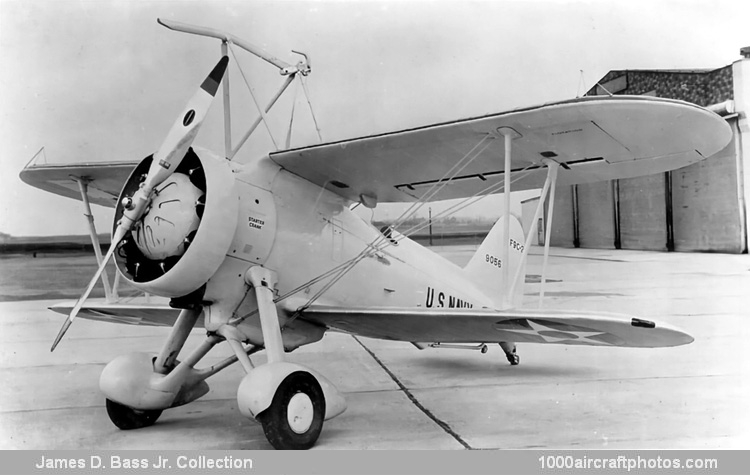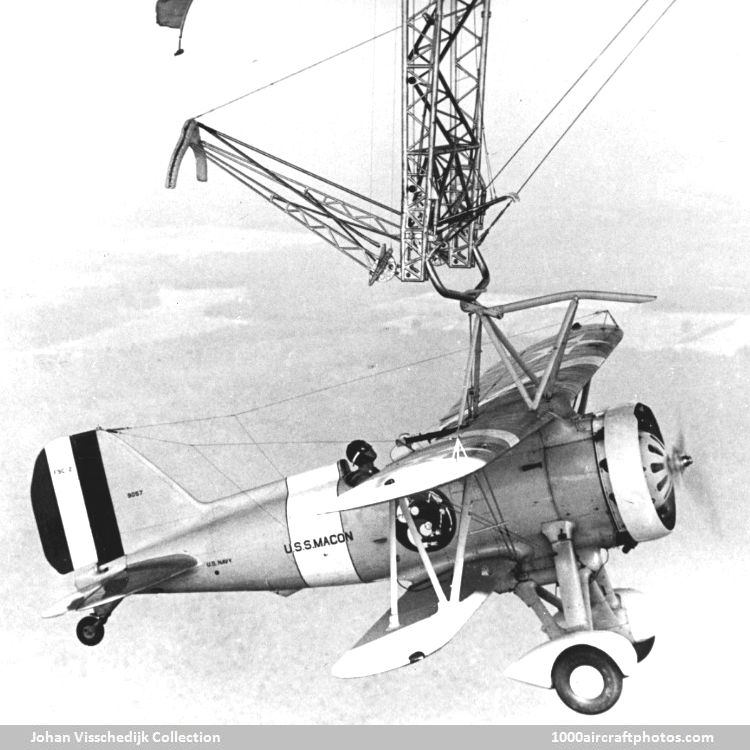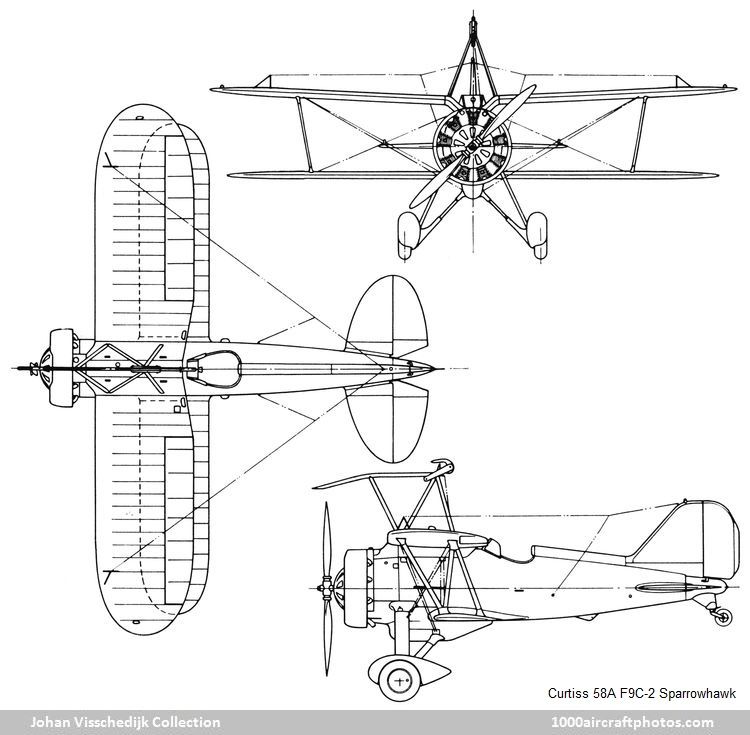04/21/2025. Remarks by Johan Visschedijk: "The eight aircraft bearing the Sparrowhawk name occupy a unique place in the annals of US Naval aviation, being the only operational fighter/scout to serve aboard the airships USS Akron and Macon. Contracts for the construction of these two airships, Goodyear-Zeppelin ZRS-4 and ZRS-5, were signed on October 6, 1928, and it was intended from the start that these airships should incorporate hangar space for four aircraft which could be launched and retrieved by means of a trapeze from which the aircraft would hang by a skyhook.
While the airships were being built, however, plans for a suitable fighter to be carried by them lagged, and the Sparrowhawk, eventually adopted, began life as a conventional carrier-based fighter to Bureau of Aeronautics specification Design No. 96, issued on May 10, 1930. The requirement was for a very small aircraft, so small, in fact, that none of the three prototypes tested by the Navy in the Design 96 competition, the Berliner-Joyce XFJ-1 (BuNo. A8288), Curtiss XF9C-1 (BuNo. A8731) and General Aviation XFA-1 (BuNo. A8732), proved acceptable for carrier operation.
The single-seat XF9C-1, however, had one special attribute so far as the airships were concerned, it was small enough to pass through the arbitrarily designed hangar door. Consequently, following conventional testing between March 31 and June 30, 1931, at the Navy Test Center at NAS Anacostia, Washington, District of Columbia, it was fitted with a skyhook and transferred to Lakehurst, NAS Lakehurst, New Jersey, making the first hook-on to the experimental trapeze on the USS Los Angeles on October 27, 1931.
Prior to this event the Bureau of Aeronautics drew up specifications for a possible improved version of the F9C, and the Curtiss company set about construction of a second prototype as a private venture. Major changes were made, particularly by raising the top wing some four inches and giving it the distinctive gull configuration of the Sparrowhawk. The 421 hp Wright R-975-C Whirlwind nine-cylinder air-cooled radial engine in the XF9C-1 was replaced by a 438 hp Wright R-975-E3, and the landing gear and tail unit were redesigned.
Bearing a civil registration (NX986M c/n 1) this prototype was demonstrated to the Navy in October 1931 and later the same month six production examples were ordered (BuNo. A9056 to A9061), to be designated F9C-2. (The six F9C-2s were ordered with the A-prefix in the BuNos, but these were omitted on delivery.) The aircraft were fitted with two fixed forward-firing 0.30 in (7.62 mm) guns. The prototype was purchased subsequently as the XF9C-2 (BuNo. 9264); both this and the XF9C-1 remained spare aircraft for the airship operation.


